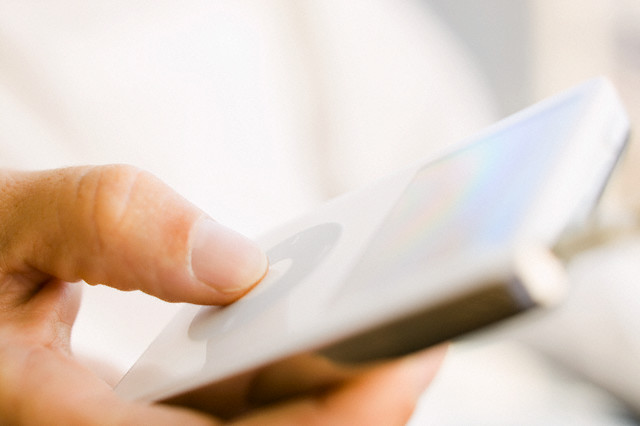Podcast Sponsorships and Measurement, Part 1: An Art and a Science

More and more people are loving on podcasts, including advertisers. But their hating on measurement options has lately been drawing much attention.
Issues have been raised everywhere, from consumer press like The Wall Street Journal and The Economist to ad trades like Digiday and AdWeek. In the latter, though, the story’s focus is on a possible solution via public radio broadcasters’ collective effort to proffer measurement and guidelines … at least for the near term.
The impressive results of the year-long collaboration by entities including WNYC, NPR, MPR and others suggest best practices for counting unique downloads and call out the issues right from the introduction: “Measurement of podcast usage is, at best, the Wild West. There has been no standard or even informal consensus around how to count downloads, listeners or time spent listening.”
While some podcast companies took exception to the “Wild West” analogy, Bryan Moffett, GM of National Public Media, a subsidiary of NPR and its sponsorship sales rep, explained the description was not about a lack of measurement, but the inconsistency in how it is approached. So the group deputized itself to create a set of guidelines -- already adopted by many public media and podcast producers -- and offered it up for the greater good.
Certainly many publishers and vendors have developed good measurement methods over the years, but this is the first time publishers of some of the largest podcasts have agreed on a way of counting downloads.
In addition, NPR and others in public media have also been working with the IAB's digital audio committee, which has been developing standards for the industry. The inherent trust placed in public broadcasters -- and their long history in podcasting -- should carry enough weight to help the overall industry rally around the current suggestions they provided, but they are still a bit of a Band-Aid.
The issue is gathering accurate data that would increase agency confidence and drive greater ad spend by the Fortune 500 powerhouse brands. As Westwood One CMO Pierre Bouvard said in an interview with Nielsen recently, “Getting an audience currency would take things to the next level.”
The how many, the who, the when and the how long they listened are the basics of that audience currency, in part because once a file is downloaded by a user, the ability to actually track listening is a big hurdle. That’s where third-party measurement services like Podtrac, help … along with workarounds to assess some of those basics.
For now the increased listenership married to anecdotes and case studies has meant a sales process that is necessarily an art and a science. As Jay Green, Vice President Digital Sales and Content Partnerships at AdLarge (and a co-worker of mine) says, “Brand investors are always evolving with their need for metrics, ease of use and campaign evaluation. Podcasting is no different and as the medium and standards have evolved so has the technology and measurement. What's amazing about podcasting is that you’re not limited to just one platform for consumption. Fans are able to listen on their favorite site, app and between devices. But with that comes the responsibility of cultivating all of the listening data and in a way that our clients can easily digest and comfortably present to their brands.”
Right now that “comfort” is derived from increasing agreement on those workarounds.
In other words, measuring usage and audiences of a Pandora, a Spotify, even a Shaq Fu (streaming radio) is easier because it’s on one platform. With podcasting, it’s tougher to get accurate monthly uniques (a go-to metric of the digital community) and downloads because people are listening on Tune-in, Stitcher, ACast, iTunes or any number of other apps -- and streaming and/or downloading.
A simple approach many companies use is to take one podcast episode and look at downloads over 14 or 30 days. “We’ve seen that the average listener tends to consume an episode once,” says Green. “So taking that measurement over 30 days can give us a good read into a show’s unique listener base.”
He acknowledges and applauds the public radio guidelines which add a slew of refinements that help eliminate clear replication and even bot considerations. That said, downloads as a metric will grow less relevant as unlimited data plans, ubiquity of smartphones and more listening apps with greater Wi-Fi availability invite more and more streaming of podcasts.
That move to increased streaming lets technology step up the dynamic ad insertion game, which in turn enables the “audience currency” Westwood’s Bouvard and others are craving. Real time ad-stitching and third party data tracking from companies like Triton/TAP, WideOrbit or DART and Sizmek can enable geo-targeting and day, date and time specificity in trafficking on demand audio ads. So, when someone chooses to listen to a “Hidden Brain” or “Jim Breuer” or “StartUp” podcast they’ll receive a timely targeted message and sponsors receive real time, accurate measurement reports.
NPR has enabled this for years, but with legions of new producers uploading content that often goes viral quickly, they ideally would be retrofitted with this new technology to really help maximize revenue when rep’d by a company like an AdLarge, Midroll or PodcastOne.
Certainly, one drawback even for a podcast offering dynamic ad insertion is that it can still be downloaded and that ad served at the time of download will live in perpetuity. Still, the “workaround” for that is to tout stats of most listening taking place within the first 48 hours of download, maintaining campaign timeliness.
It’s that combination of art and science that’s been satisfying an increasing number of digital agencies with at least some accountability -- and that’s where the art of the pitch comes in. Right now advertiser perception studies show brand lift from podcast sponsorships, and sellers are validated by getting repeat business from direct response advertisers who’ve seen offer codes redeemed.
What's driven other industries like radio, video and display is a great understanding of measurement guidelines and standards. As AdLarge’s Green says, “The public media whitepaper was a great step in the right direction and as other platforms and membership organizations continue to work together there is no doubt that podcasting will continue its spending rise.”
So is science on the cusp of overtaking the art -- or at least matching it?
Coming up in Part 2, breaking news on the upcoming release of new podcast measurement data that could fill that Holy Grail a little more.
Image at top courtesy of Corbis. The opinions and points of view expressed in this commentary are exclusively the views of the author and do not necessarily represent the views of MediaVillage/MyersBizNet management or associated bloggers.


